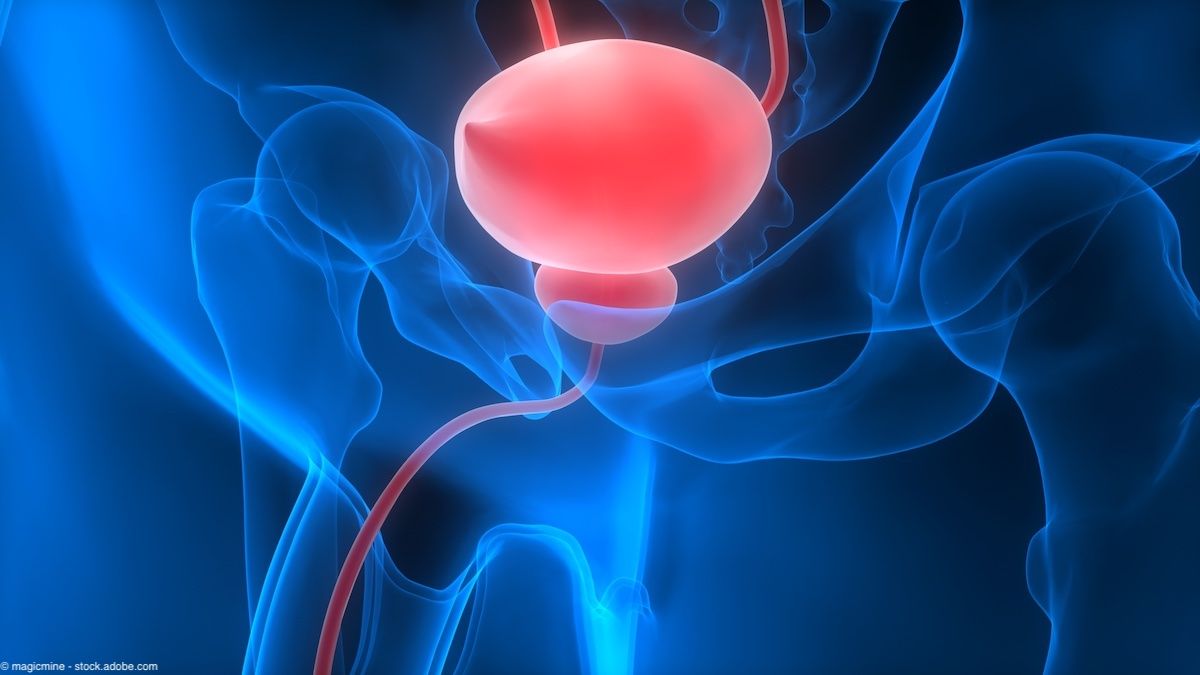Article
Modified detrusor leak point pressure measurement may better predict renal injury risk
A simple alteration in how detrusor leak point pressure (DLPP) is measured in patients with neurogenic bladder may result in a more accurate assessment of a patient's potential risk for renal injury.

This modification of the original DLPP measurement technique also may improve preoperative assessment of outlet resistance if the DLPP is being used to determine the necessity of additional outlet enhancement, the study's authors say.
In 1981, McGuire et al first described the association of upper tract injury with a DLPP above 40 cm H2O in patients with a neurogenic bladder. Since then, the accuracy of the DLPP measurement has become increasingly important, owing to changing attitudes in the urologic community about how these patients and their neuropathic bladders are treated, said first author Andrew Combs, RPA-C, director of the Center for Urodynamics and Incontinence at the Morgan Stanley Children's Hospital of New York-Presbyterian, Columbia University Medical Center, New York.
The leak point pressure also influences the timing of surgery, he explained.
"If a particular patient needs reconstructive bladder surgery, knowing that their true DLPP is below 40 cm H2O can comfortably allow for the surgery to be delayed if that is desirable for any of a variety of educational, social, and/or economic reasons," said Combs, who worked on the study with Kenneth I. Glassberg, MD and colleagues.
Simple modification requires re-insertion
The modification of the DLPP measurement procedure is simple. The DLPP measurement is first taken in the standard manner; namely, the detrusor pressure at the point of leakage around the urethral urodynamic catheter, as a function of a passive rise in pressure directly related to increasing volume and reflective of detrusor compliance, during standard multichannel urodynamics.
The infusion is then stopped, and once leakage has ceased, the urethral catheter is removed to check for leakage. Should leakage occur, observation continues until the leakage ceases. The catheter is then re-inserted and the detrusor pressure on reinsertion is noted. Filling is then resumed, and the entire process is repeated several times (usually three to four) until an average DLPP measurement by both standard and re-insertion techniques is reliably identified.
The study team evaluated the method in 62 spina bifida patients who were divided into two groups. Group 1 consisted of 36 patients with sustained leak point pressures ≥40 cm H2O on both traditional and re-insertion measurements. Group 2 consisted of 26 patients whose DLPP was consistently ≥40 cm H2O on traditional measurement but <40 cm H2O on re-insertion measurements.
The patients in group 1 showed a high incidence (44.4%) of hydronephrosis and/or vesicoureteral reflux and renal insufficiency (11%). Group 2 patients had an incidence of hydronephrosis and/or vesicoureteral reflux of only 15.4% (four patients), and in each case the hydronephrosis or reflux was low grade. All four of those patients had concomitant hyperreflexia and sphincter dyssynergy that had not yet been controlled. There were no cases of renal insufficiency in group 2.
Combs added several caveats to the results, noting that clinical decisions should not be based solely on leak point pressure measurements.
First, he said, not all patients with a DLPP of >40 cm H2O will go on to have upper tract deterioration, but they are, in fact, at increased risk for it.
"On the other hand, storage pressures below 40, while less likely to result in renal injury, can still reflect significantly impaired compliance and should be aggressively treated. We are also not saying that the DLPP as measured traditionally is false or incorrect; only that there is a subset of patients whose true DLPP may actually be lower if assessed using the re-insertion modification," Combs said.
ModernMedicine NETWORK
NEWS & UPDATES
Antibiotic prophylaxis may lead to a decrease in urinary tract infections in children, according to a recent study. Read: http://www.urologytimes.com/UTIschildren
EDUCATION
Learn about treatment options for UTIs in adolescents with this CME article See: http://www.urologytimes.com/UTIs














